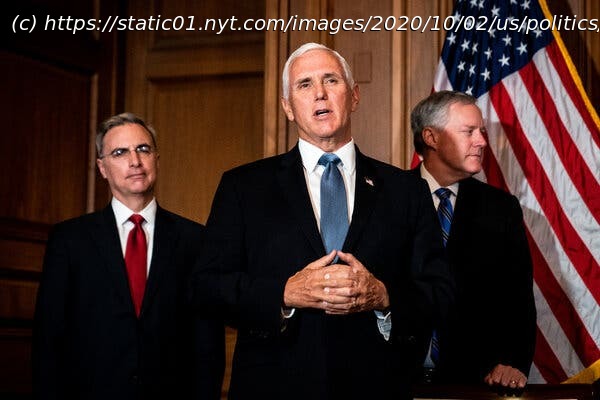The Constitution says the vice president is next in line if the president dies or can no longer serve, but things get murkier from there.
President Trump’s positive coronavirus test has raised the possibility, however remote, that he could become incapacitated or potentially die in office if his symptoms worsen. While that outcome remains highly unlikely, and few in Washington were willing to discuss it on Friday, when Mr. Trump was said to be experiencing mild symptoms, the Constitution and Congress long ago put in place a plan of succession to ensure that the nation is protected from adversaries and internal conflict when the elected president cannot serve. The Constitution makes clear that the vice president is first in line to succeed the president should he or she die in office, and can step in to temporarily take on the duties of the presidency should the commander in chief become incapacitated. Vice President Mike Pence,61, tested negative for the coronavirus on Friday. Other situations become far more complicated and are wrapped in a cloud of legal disagreement over what to do if a president cannot exercise his duties but refuses to give them up, or wins election but cannot serve, or in a case in which the president and the vice president are incapacitated. Here’s how it works: The Constitution and the law are clearest in instances when a president dies or must resign from office. The 25th Amendment states: “In case of the removal of the president from office or of his death or resignation, the vice president shall become president.” The ascension of a vice president under such circumstances has not been that rare in United States history. A vice president has assumed the nation’s highest office because of the president’s death eight times, most recently in 1963, after the assassination of John F. Kennedy, when Lyndon B. Johnson became president. (In 1974, Vice President Gerald Ford became president after the resignation of President Richard M. Nixon.) The Constitution leaves it to Congress to decide what should happen if the vice president also dies or cannot serve, and several laws have been enacted to lay out the contingencies. The most recent, the Presidential Succession Act, was enacted in 1947 after the death of President Franklin D. Roosevelt in 1945. (It was tweaked again in 2006.) The statute says the speaker of the House is next in line, followed by the president pro tempore of the Senate, and then members of the cabinet, starting with the secretary of state. Speaker Nancy Pelosi,80, said on Friday that she had tested negative for the virus and was confident that the right plans were in place, should they become necessary. “Continuity of government is always in place,” she said on MSNBC. “I always say it’s a relic of the past, but nonetheless, they say we have our job we have to do, and this is what we’ll do.






